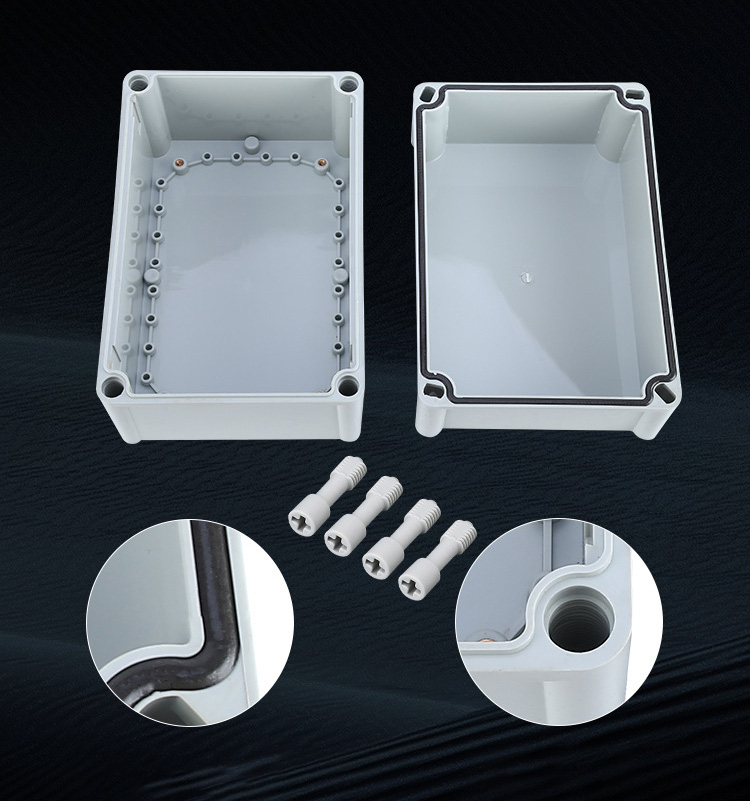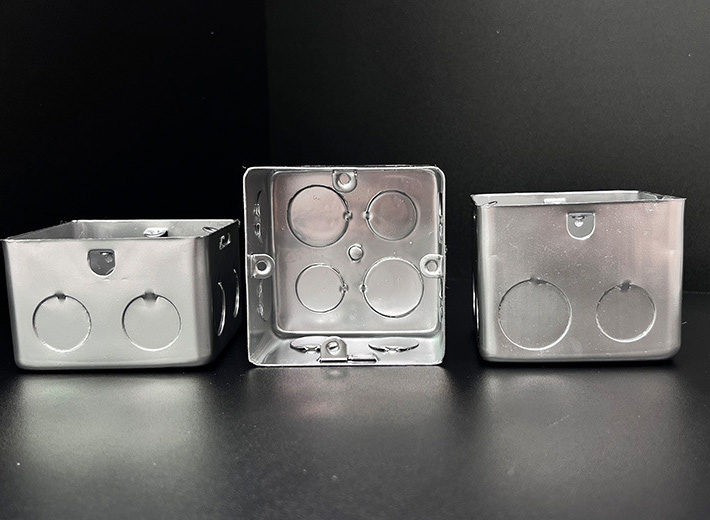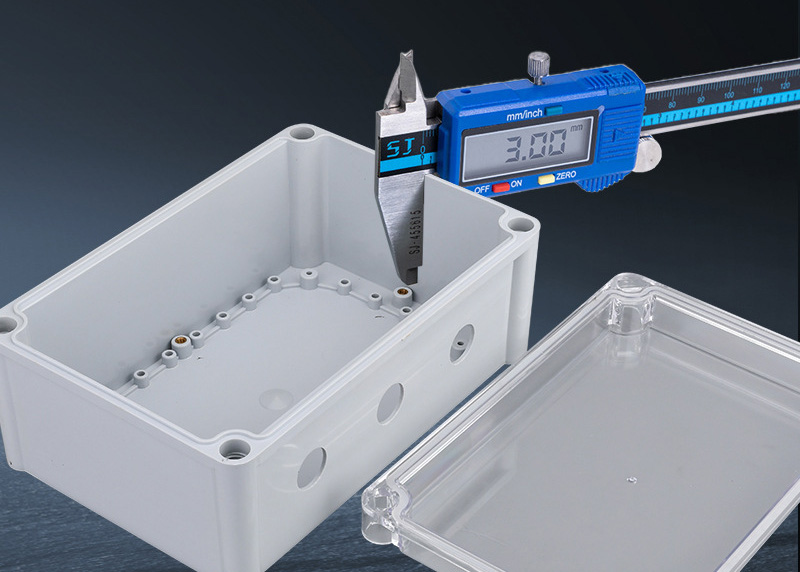電気システムを計画または設置する場合、安全性、効率性、および法規制への準拠のために、ジャンクションボックスとプルボックスの違いを理解することが極めて重要です。どちらも電線管システムのエンクロージャとして機能しますが、その機能と設計意図は異なります。
1.目的と機能
✅ ジャンクションボックス
ジャンクションボックス は、ワイヤーのスプライスや接続に使用される。
電気技師は、そのような場所に設置する:
ワイヤーは接合されたり、分割されたり、枝分かれしたりする。
電気負荷は回路間で移動する。
主な役割
ワイヤー接続の保護
配線の整理
湿気、ほこり、機械的損傷への暴露を防ぐ

✅ プルボックス
プルボックスは、長い、または重い電気ケーブルを電線管に通すために設計されています。
設置されるのは次のような場合だ:
電線管の長さが、1回の引張で規定値を超えている。
90度の屈曲が複数あるため、ケーブルの引き回しが難しい。
太いゲージのワイヤーを使用。
主な役割
ワイヤーの取り付けが容易
張力や摩擦によるケーブルの損傷を防ぐ。
メンテナンスのために将来的にアクセスできるようにする。
重要:プルボックスには、ワイヤースプライスや電気接続は含まれていません。

これら 電気接続箱 は、金属製とプラスチック製の両方のオプションがあり、さまざまな環境での電気接続に信頼性の高い保護を提供します。プラスチック製エンクロージャは ABSまたはPC素材軽量で耐食性に優れ、屋内での使用に最適です。金属製のボックスは、屋外や産業環境での使用に適した耐久性と遮蔽性を備えています。全モデル カスタマイズ可能 が付属する。 IP66防水等級 パフォーマンスを向上させる。
2 身体的な違い
| 特徴 | ジャンクションボックス | プルボックス |
| サイズ | 通常、中小規模 | 通常、ケーブル・アクセス用に大型化されている |
| 内容 | ワイヤー接続/スプライス | ケーブルだけが引っ張られる |
| アクセスパネル | 完全に密閉されている場合もある | 多くの場合、カバーは取り外し可能 |
| 取り付け位置 | 壁、天井、機器コンセント | 長い電線管をインラインで通す |
3 コードコンプライアンス(NECベース)
スプライシングが必要な場合はジャンクションボックスを使用し、アクセス可能な状態を維持すること。
プルボックスは以下の場合に必要となる:
電線管の長さが30mを超える場合
90°カーブが2本以上ある。
電線サイズまたは電線管充填のため、引き抜きが困難
設置のガイドラインについては、必ずNEC第314条および地域の建築基準法を参照してください。

4 なぜそれが重要なのか専門家の洞察
ジャンクションボックスの代わりにプルボックスを正しく使用しない場合、またはその逆の場合、次のような問題が発生する可能性があります:
規約違反
火災や回路故障のリスクが高まる
点検・整備時の問題
プロの電気技師や請負業者は、常に機能、場所、安全要件に基づいてエンクロージャーを選択します。
5 総括表
| 特徴 | ジャンクションボックス | プルボックス |
| ワイヤー・スプライシング | はい | いいえ |
| ケーブル引張用 | いいえ | はい |
| 典型的なサイズ | 小~中 | 中型から大型 |
| NECの機能 | ワイヤー接続ポイント | ワイヤー引き出しのためのアクセス |
| 設置用途 | 住宅用/商業用配線 | 長い電線管、産業用セットアップ |
結論
電線の接続や保護が必要な場合は、ジャンクションボックスを使用する。
プルボックスを使用すると、長くて重い、または複雑な配線を簡単に設置できます。
それぞれが、安全でコンプライアンスに適合した効率的な電気システムを確保する上で、明確な役割を担っている。
プルボックスと ジャンクションボックス は、それぞれ異なる目的で使用されます。プルボックスは、長い電線管や曲がった電線管に電線を通す場合に使用します。電線を接続して保護する必要がある場合は、ジャンクションボックスを使用します。適切なものを選択することで、システムを安全に保ち、規格に適合させることができます。
どれを使えばいいかわからない? ホーフェンファブ 技術サポートチームがお手伝いします。お客様のプロジェクトに合ったボックスのタイプ、サイズ、素材をご案内いたします。 ホーフェンファブへのお問い合わせ 専門家によるアドバイスとカスタムソリューションについては、今すぐお問い合わせください。
